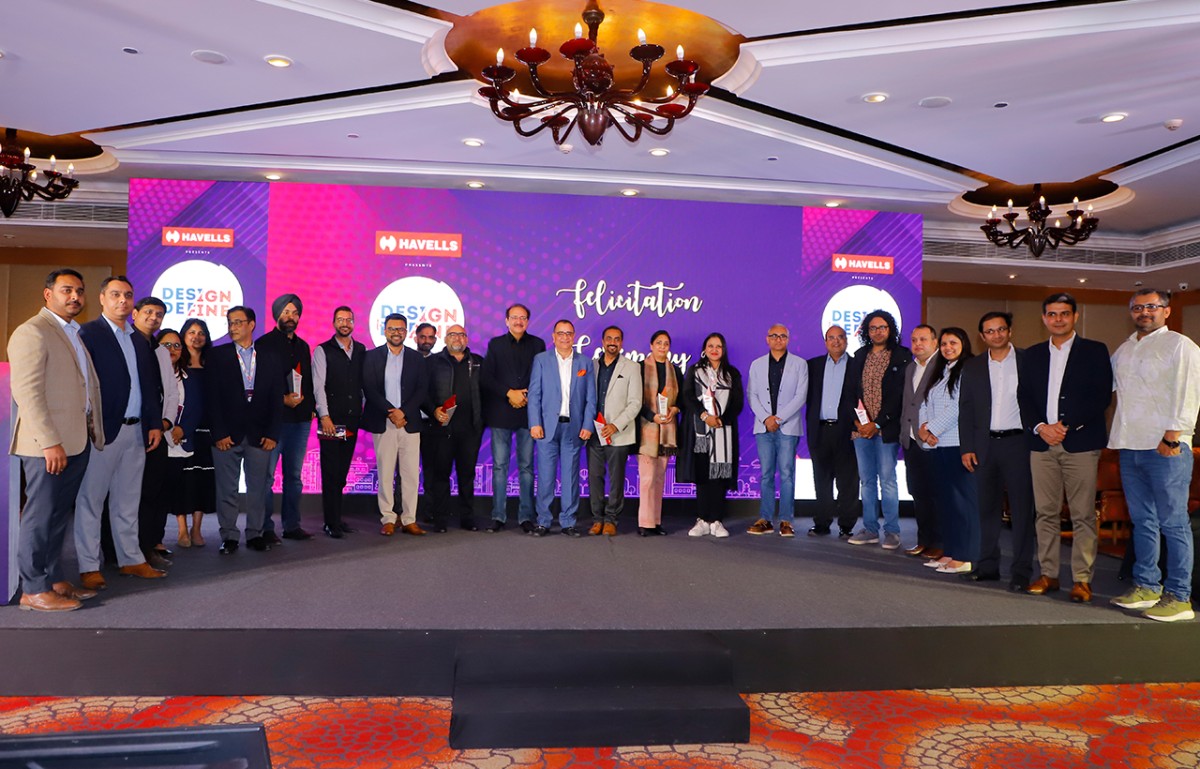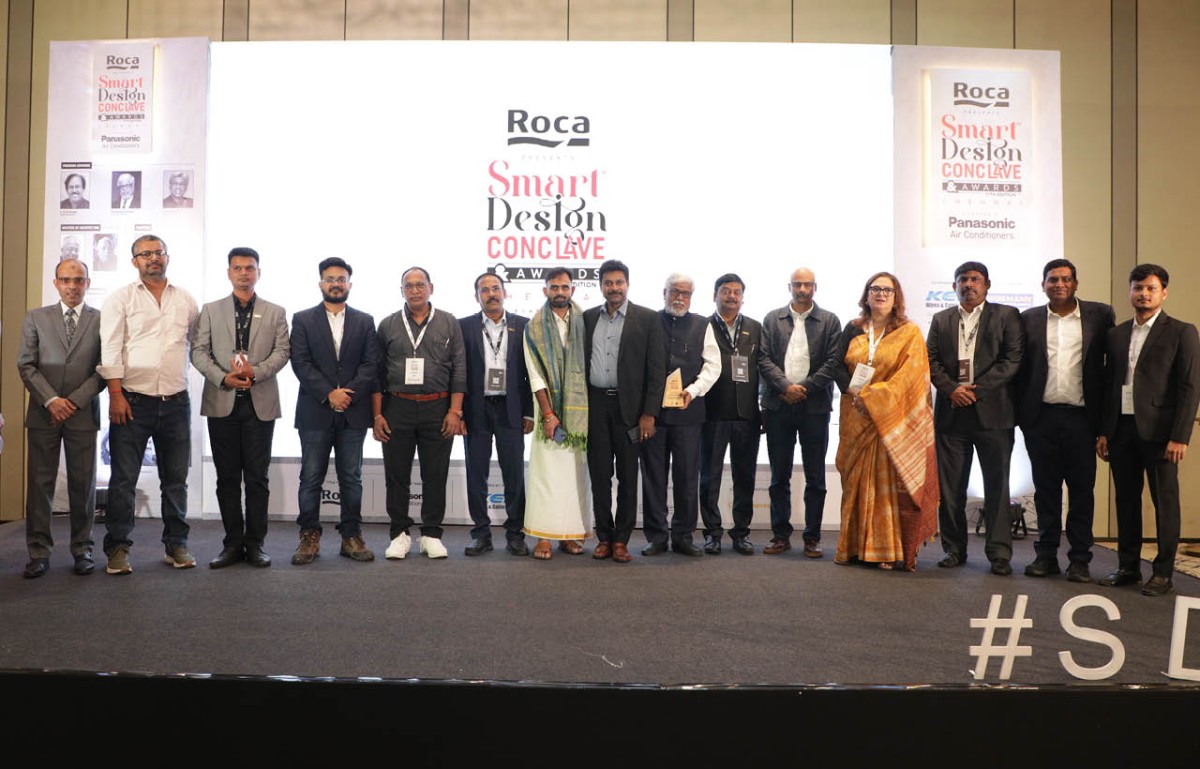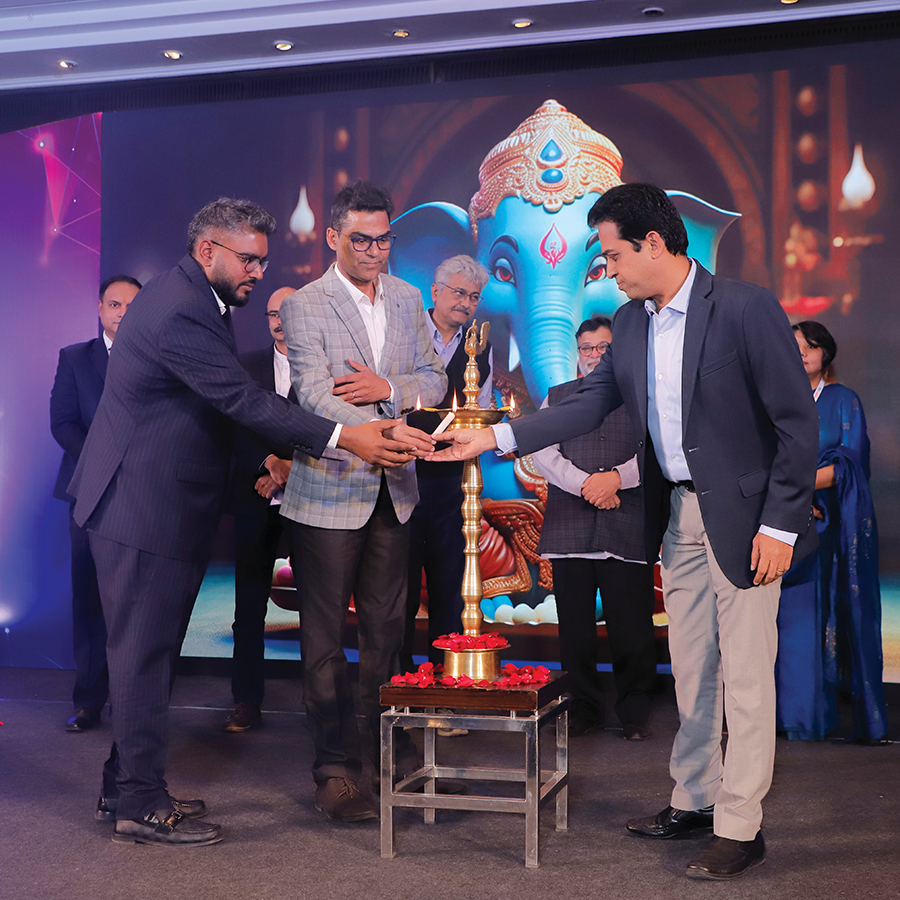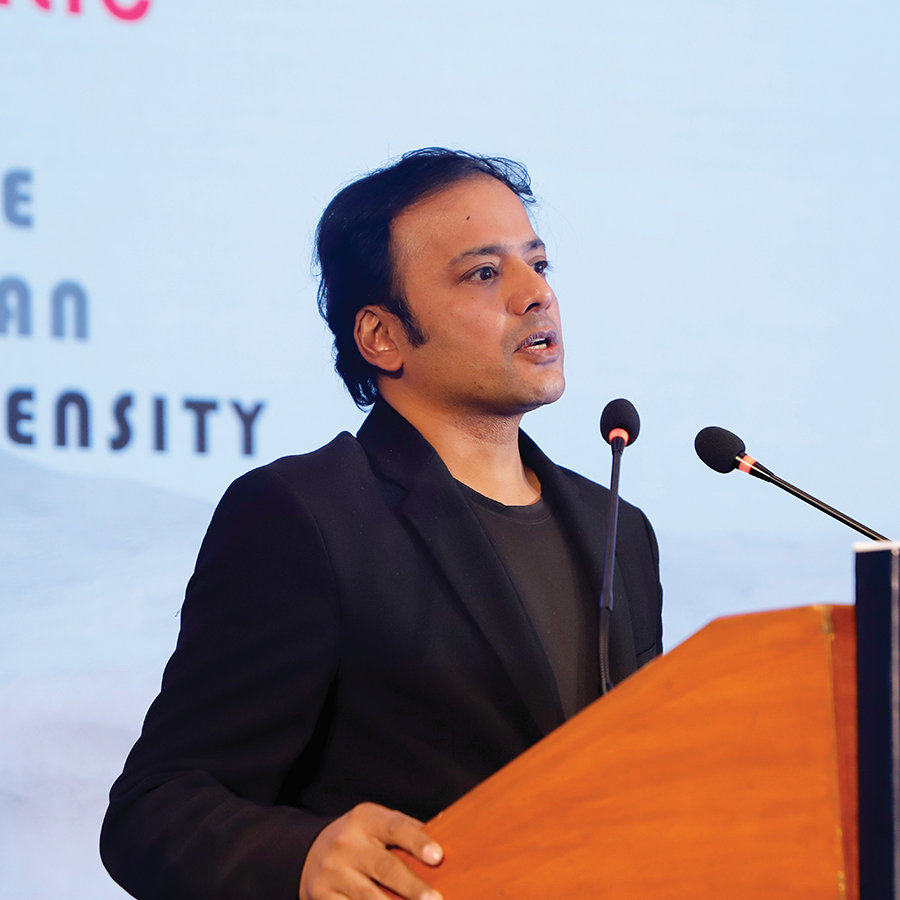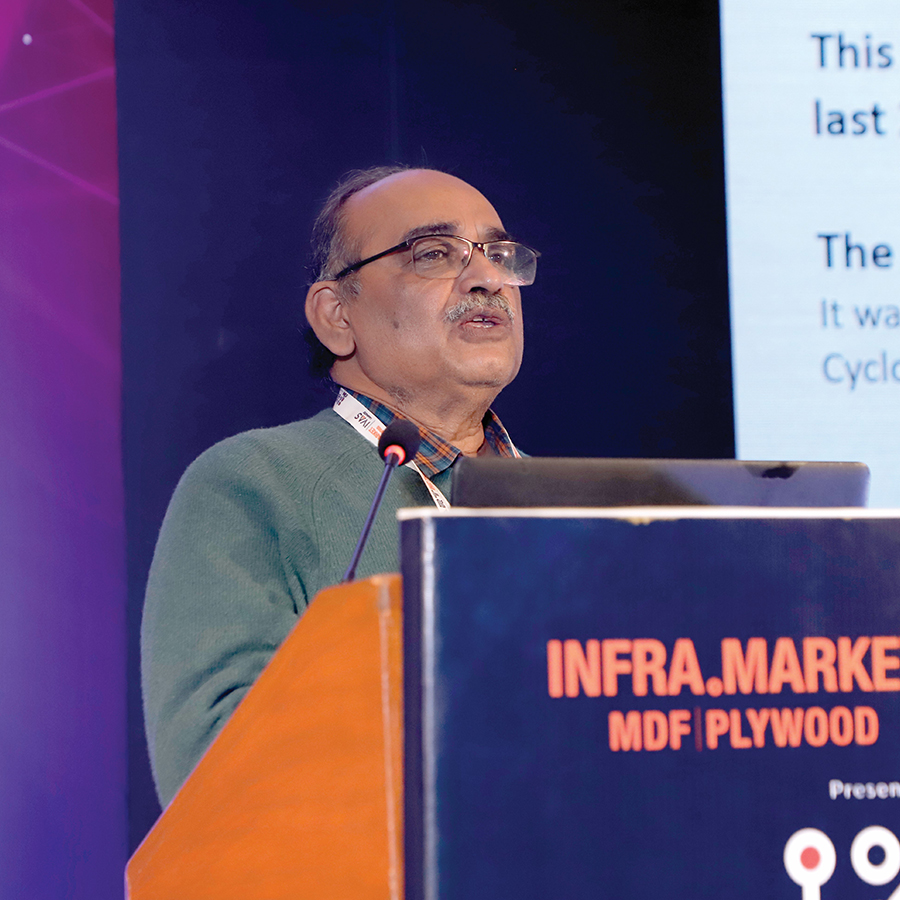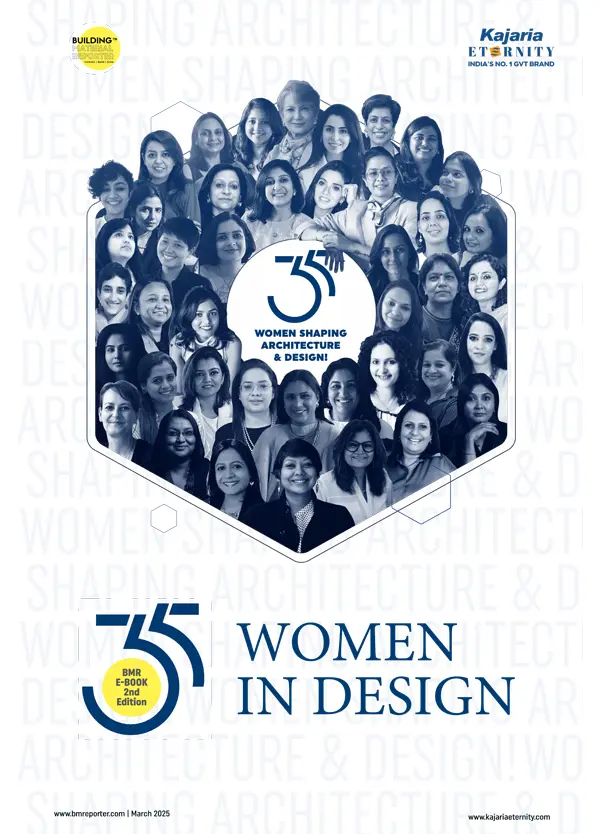Studio Symbiosis Leads the Future of Biophilic Design
- October 27, 2025
- By: Syed Md. Ehteshamul Hasan
- NEWS
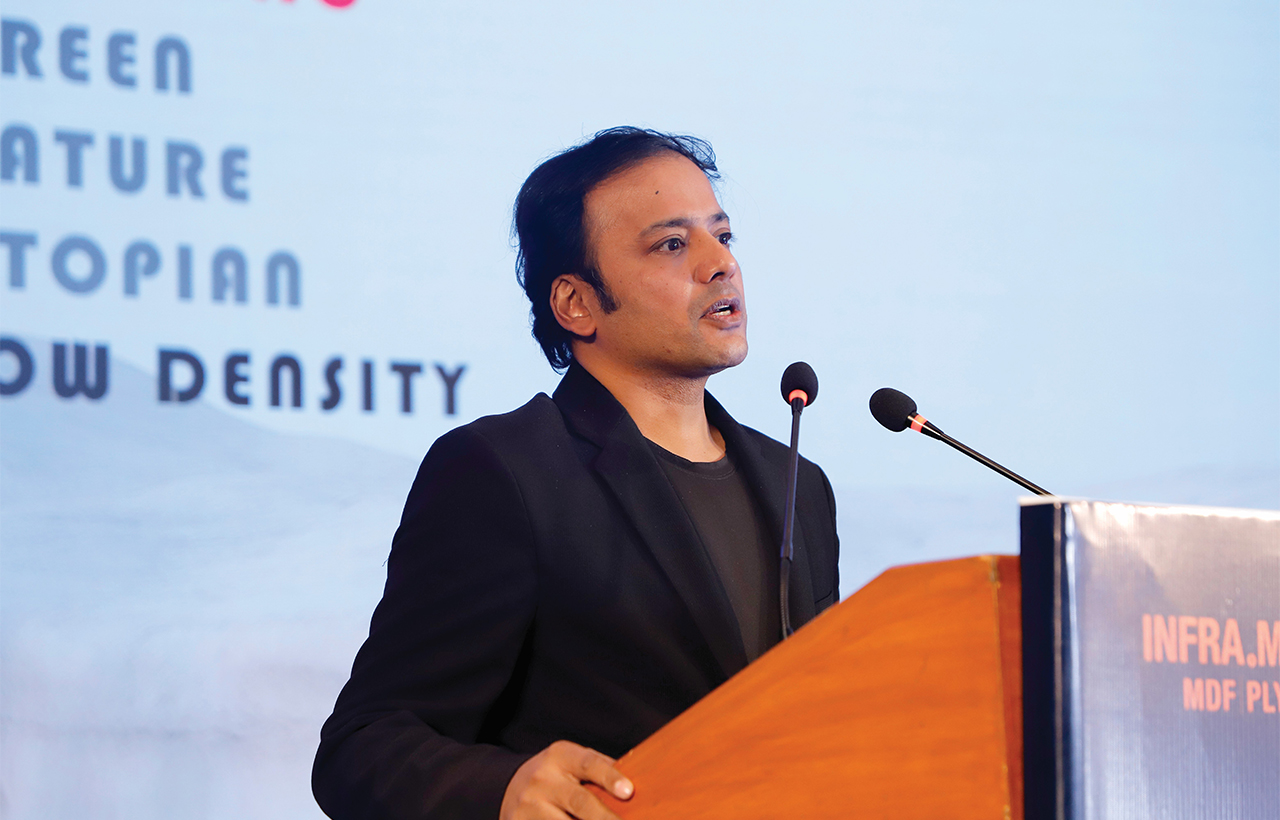 In a world where architecture is rapidly evolving, Ar. Amit Gupta of Studio Symbiosis envisions a future where biophilic design and cyber cities coexist, creating spaces that are both sustainable and technologically advanced. At Smartex 2025, he shared insights into how performance-driven architecture is shaping the future of urban living. Excerpts: Syed Md Ehteshamul Hasan
In a world where architecture is rapidly evolving, Ar. Amit Gupta of Studio Symbiosis envisions a future where biophilic design and cyber cities coexist, creating spaces that are both sustainable and technologically advanced. At Smartex 2025, he shared insights into how performance-driven architecture is shaping the future of urban living. Excerpts: Syed Md Ehteshamul Hasan
The future of architecture is at a crossroads, driven by the dual forces of technological advancement and environmental consciousness. Ar. Amit Gupta, Founding Partner of Studio Symbiosis, believes that the answer lies not in choosing between these two realities but in merging them to create a harmonious balance. During his talk at Smartex 2025, Gupta explored the concept of performance-driven architecture, emphasising the need for adaptability, sustainability, and human-centric design in the face of rapid urbanisation and technological change.
The Two Realities: Cyber Cities & Biophilic Architecture
Ar. Amit Gupta introduced two distinct yet interconnected visions for the future of architecture: Cyber Cities and Biophilic Architecture. Cyber Cities represent a futuristic, technology-driven urban landscape characterised by high-rise buildings, AI-driven mobility, and neural networks that connect humans, machines, and infrastructure. These cities are designed for maximum efficiency, utilising advanced materials like carbon fibre and addressing challenges such as pollution and dense urbanism. The visual language of Cyber Cities is intentionally stark, with muted colours reflecting the environmental challenges of the future.
On the other hand, Biophilic Architecture draws inspiration from nature, creating spaces that integrate greenery, natural forms, and sustainable materials. This approach emphasises low-density, adaptive structures that blend seamlessly with the landscape. He highlighted the importance of creating ‘green pods’ that combine futuristic design with minimalism, ensuring that architecture remains in harmony with the environment.
The Symbiosis of Cyber Cities & Biophilia
Rather than viewing these two realities as mutually exclusive, Ar. Amit Gupta advocates for a symbiotic relationship between them. He believes that the future of architecture lies in combining the efficiency and technological advancements of Cyber Cities with the sustainability and human-centric design of Biophilic Architecture. This hybrid approach allows architects to address the challenges of urbanisation while creating spaces that prioritise well-being and environmental stewardship.
Sky Gardens: A Case Study in Green Living
One of the key projects Ar. Amit Gupta showcased was Sky Gardens, a 10-acre residential development in Hyderabad. This project exemplifies the principles of performance-driven architecture by integrating high-density living with biophilic design. The concept revolves around creating ‘green living’ spaces where every resident has access to outdoor areas, effectively making each apartment a penthouse. The design aggregates small house modules with front lawns, stacking them vertically to maximise space and greenery.
The project also incorporates adaptability as a core principle. The apartments are designed to evolve with the residents, transitioning from bachelor pads to family homes as needs change. Fixed elements like restrooms are strategically placed, while the remaining spaces remain flexible, allowing residents to customise their living environments. This approach not only enhances functionality but also ensures that the architecture remains relevant over time.
Sustainability & Human-Centric Design
Sustainability is a central theme in Ar. Amit Gupta's work, and Sky Gardens is no exception. The project features planters integrated into the facade, providing clean air and a sense of green living for residents. The landscape design includes water features and wild grass, further enhancing the connection to nature. Even the entrance lobbies are designed to feel like living rooms, creating a human scale in a 150-meter tower.
He emphasised the importance of allowing residents to express their personalities within their spaces. By keeping the tonality neutral, the design encourages individuality, ensuring that the architecture serves as a canvas rather than a constraint.
Adaptive Architecture: Responding to Changing Needs
The COVID-19 pandemic highlighted the need for adaptable living spaces, and Ar. Amit Gupta's work reflects this shift. He discussed how homes have become multifunctional spaces, serving as offices, gyms, and entertainment areas. This trend has influenced the design of projects like Sky Gardens, where vertical living is reimagined to create a sense of community and accessibility. Residents can easily access green spaces and amenities within a few floors, fostering a connection to nature and reducing the need for extensive travel.
The Role of Technology in Architecture
Technology plays a crucial role in Ar. Amit Gupta's vision for the future. He highlighted the use of AI in landscape design, creating iterative patterns that seamlessly integrate hardscape and landscape. Prefabricated construction systems and jump form technologies are also employed to enhance efficiency and reduce waste. These innovations enable architects to meet the demands of high-density urban projects while maintaining a focus on sustainability and human-centric design.
Expanding the Vision: Ar. Amit Gupta shared additional examples to illustrate his vision. In one project, he explored the idea of ‘land scrapers’ rather than sky scrapers, where buildings are designed to blend with the terrain, creating a low-rise, high-density environment. This approach, inspired by the natural forms of the Manta Ray, integrates green pods and adaptive architecture, ensuring that the structures are not only functional but also aesthetically harmonious with their surroundings.
Another example he discussed was the use of natural materials and forms to create habitable spaces. In one project, a rock formation was transformed into a living space, demonstrating how architecture can adapt to and enhance natural landscapes. This approach not only reduces the environmental footprint but also creates unique, immersive experiences for inhabitants.
A Vision for the Future: Ar. Amit Gupta's work at Studio Symbiosis represents a bold step toward the future of architecture. By merging the principles of Cyber Cities and Biophilic Architecture, he envisions a world where technology and nature coexist, creating spaces that are efficient, sustainable, and deeply human. Performance-driven architecture, as Gupta defines it, is not just about meeting the needs of today but anticipating the challenges of tomorrow.
As urbanisation continues to reshape our world, Gupta's approach offers a blueprint for creating cities that are not only functional but also nurturing. By prioritising adaptability, sustainability, and human connection, performance-driven architecture has the potential to transform the way we live, work, and interact with our environment. In the words of Ar. Amit Gupta, "We are not just designing buildings; we are designing dreams for a better future."


